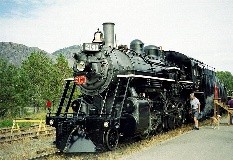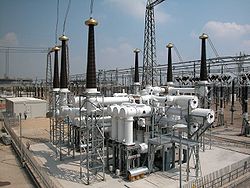See below as well as Appendixes E, F, G and H for detailed information on the data required in order to complete a typical interference analysis. Appendix I provides additional information on this subject as well. The following gives a brief summary of the required analysis tasks.
AC Interference for Pipelines
Data you will need: Refer to Appendix E & F
Load Conditions:
- Inductive Interference
- Capacitive Interference
Fault Conditions:
- Inductive Interference
- Conductive Interference
- Capacitive Interference
Results Needed to Be Explored:
- Transferred Potentials
- Coating Stress Voltages
- Safety for Exposed Appurtenances: Touch And Step Voltages
- Rating of Cables and DC Decouplers
- Leakage Current Density
Mitigation Criteria:
- Load Conditions:
- Touch Voltages at Exposed Pipeline Appurtenances: < 15 V
- Touch Voltages on Non-Exposed Pipeline Appurtenances : < 50V
- Transferred Potentials Outside Joint-Use Corridor
- Leakage Current Density (ac induced corrosion)
- Fault Conditions:
- Touch and Step Voltages at Exposed Pipeline Appurtenances: IEEE safety criteria
- Coating Stress Voltage: 2 kV ~ 5 kV
AC Interference for Railways
Data you will need: Refer to Appendix E & G
Load Conditions:
- Inductive Interference
- Capacitive Interference
Fault Conditions:
- Inductive Interference
- Conductive Interference
- Capacitive Interference
Results Needed to Be Explored:
- Transferred Potentials: Rail Ground Potential Rises, Touch And Step Voltages (For Personnel Safety, Arrestor Rating Under Fault Conditions,)
- Rail-To-Rail Voltages (For Equipment Susceptibility)
- Voltages Across Insulated Joints (For Personnel Safety)
- Longitudinal Current Flows In The Rails
Mitigation Criteria:
- Load Conditions:
- Rail Ground Potential Rise Along The Rail Tracks: < 25 V
- Touch Voltages On Rail Tracks:
- Rail-To-Rail Voltage On Equipment: < Equipment Susceptibility
- Voltage Across The Insulting Joint: < 50 V
- Fault Conditions:
- Touch And Step Voltages On The Rail Tracks: IEEE Safety Criteria
- Longitudinal Current In The Rails: DCD & Arrestor Rating
AC Interference for Telecommunication Cables
Data You Will Need: Refer To Appendix E & H
Load Conditions:
- Inductive Interference
- Capacitive Interference
Fault Conditions:
- Inductive Interference
- Conductive Interference
- Capacitive Interference
Results Needed To Be Explored:
- Transferred Potentials: Sheath Ground Potential Rises (Common Mode Voltages), Touch And Step Voltages (For Personnel Safety, Arrestor Rating Under Fault Conditions,)
- Cross-Talk Or Transverse Voltages (For Equipment Susceptibility)
- Voltages Across Wires And Sheaths (For Personnel Safety)
- Longitudinal Current Flows In The Sheaths
Mitigation Criteria:
- Load Conditions:
- Sheath Ground Potential Rise
- Touch Voltages:
- Transverse Voltage On Equipment: < Equipment Susceptibility
- Fault Conditions:
- Sheath Ground Potential Rise
- Voltage Across Wire Pairs And Across Sheath And Wires
- Touch Voltages On The Sheaths: IEEE Safety Criteria
- Longitudinal Current In The Sheaths
Soil Resistivity Measurements and Interpretation
Soil resistivity measurements and interpretation are one of the key tasks in any serious accurate ac interference study. Please refer to Appendix I or measurement and interpretation techniques recommended by SES.
The time required to measure the required soil resistivity data over the entire X km of victim line will depend on several factors, including the number of daylight hours during the measurement process, ease of site access, the weather, and the terrain. We have seen a team of two men completing two measurement sites per day, where each measurement site requires on the order of 15 measurements, at Wenner pin spacings varying between 0.5 m and 100 m (between adjacent pins). Sites are selected where particularly high levels of interference are expected, where exposed appurtenances are located and at intervals of 2 km or less within and near the interference zones, where the actual spacing required depends on the degree of uniformity of the soil structure along the length of the pipeline route.
Note that care should be taken in selecting the soil resistivity measurement equipment, in choosing the exact measurement traverse locations, and in taking the measurements, to insure satisfactory results. SES can provide support in this regard. No other field data is required provided that the drawings and data supplied by the gas and electric companies are complete and accurate. Collecting the data, however, should not be underestimated as a task, since data is frequently incomplete or unclear and requires further questioning or even field checks. Soil resistivity measurements are made over a considerable range of depths, as voltages transferred to the pipeline location by faulted transmission line towers or poles can be greatly influenced by deeper soil resistivities, as can the performance of long gradient control mitigation wires: as described in the paper transmitted to you previously, the soil layering can result in order-of-magnitude differences in conductive interference levels and mitigation performance. Having this data permits accurate modeling and, ultimately, cost-effective mitigation designs.
See Appendix I for further details.





